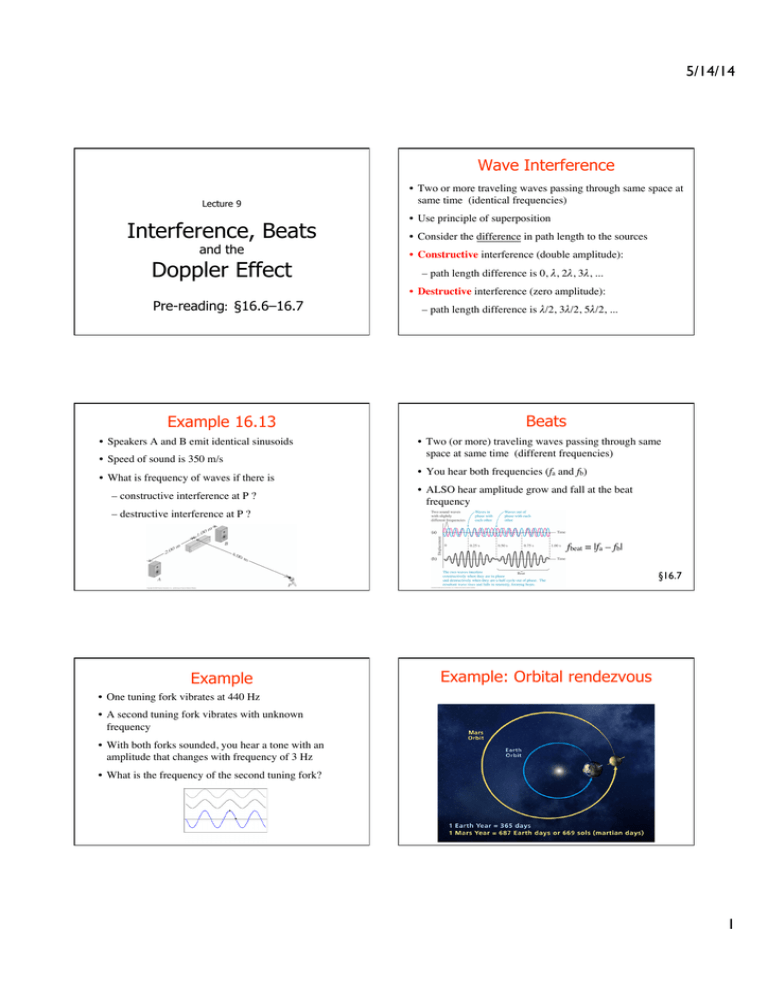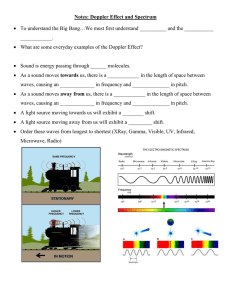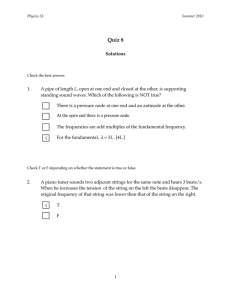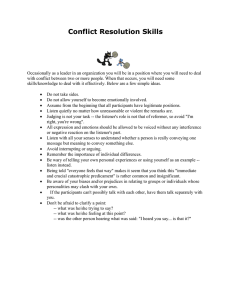Interference, Beats Doppler Effect
advertisement

5/14/14 Wave Interference Lecture 9 Interference, Beats and the Doppler Effect • Two or more traveling waves passing through same space at same time (identical frequencies) • Use principle of superposition • Consider the difference in path length to the sources • Constructive interference (double amplitude): – path length difference is 0, λ, 2λ, 3λ, ... • Destructive interference (zero amplitude): Pre-reading: §16.6–16.7 Example 16.13 • Speakers A and B emit identical sinusoids • Speed of sound is 350 m/s • What is frequency of waves if there is – constructive interference at P ? – destructive interference at P ? – path length difference is λ/2, 3λ/2, 5λ/2, ... Beats • Two (or more) traveling waves passing through same space at same time (different frequencies) • You hear both frequencies (fa and fb) • ALSO hear amplitude grow and fall at the beat frequency fbeat = |fa – fb| §16.7 Example Example: Orbital rendezvous • One tuning fork vibrates at 440 Hz • A second tuning fork vibrates with unknown frequency • With both forks sounded, you hear a tone with an amplitude that changes with frequency of 3 Hz • What is the frequency of the second tuning fork? 1 5/14/14 Doppler Effect • Change in perceived frequency due to relative motion of a source (S) and listener (L) Stationary Source Moving Source Doppler Effect • Change in perceived frequency due to relative motion of a source (S) and listener (L) • Case 1: Source at rest, Listener moving fL = (1 + vL/v) × fS • Case 2: Source and Listener moving • Pay attention to sign of vL, vS ! (positive from L to S) • For light waves fL = √[ (c–v) / (c+v) ] × fS c = 3.0 × 108 ms–1 Doppler Effect • Change in perceived frequency due to relative motion of a source (S) and listener (L) • Case 1: Source at rest, Listener moving fL = (1 + vL/v) × fS • Case 2: Source and Listener moving Next lecture Doppler effect and Shock waves • Pay attention to sign of vL, vS ! (positive from L to S) • For light waves fL = √[ (c–v) / (c+v) ] × fS c = 3.0 × 108 ms–1 Read §16.8–16.9 2




